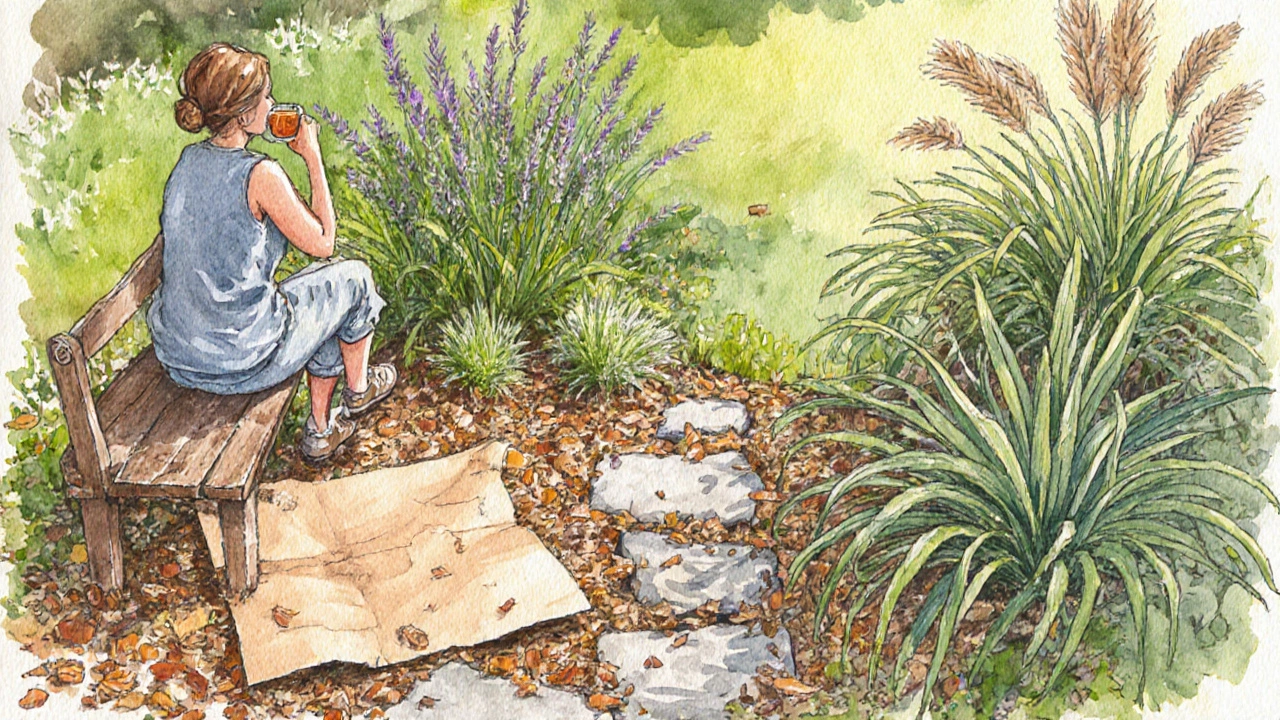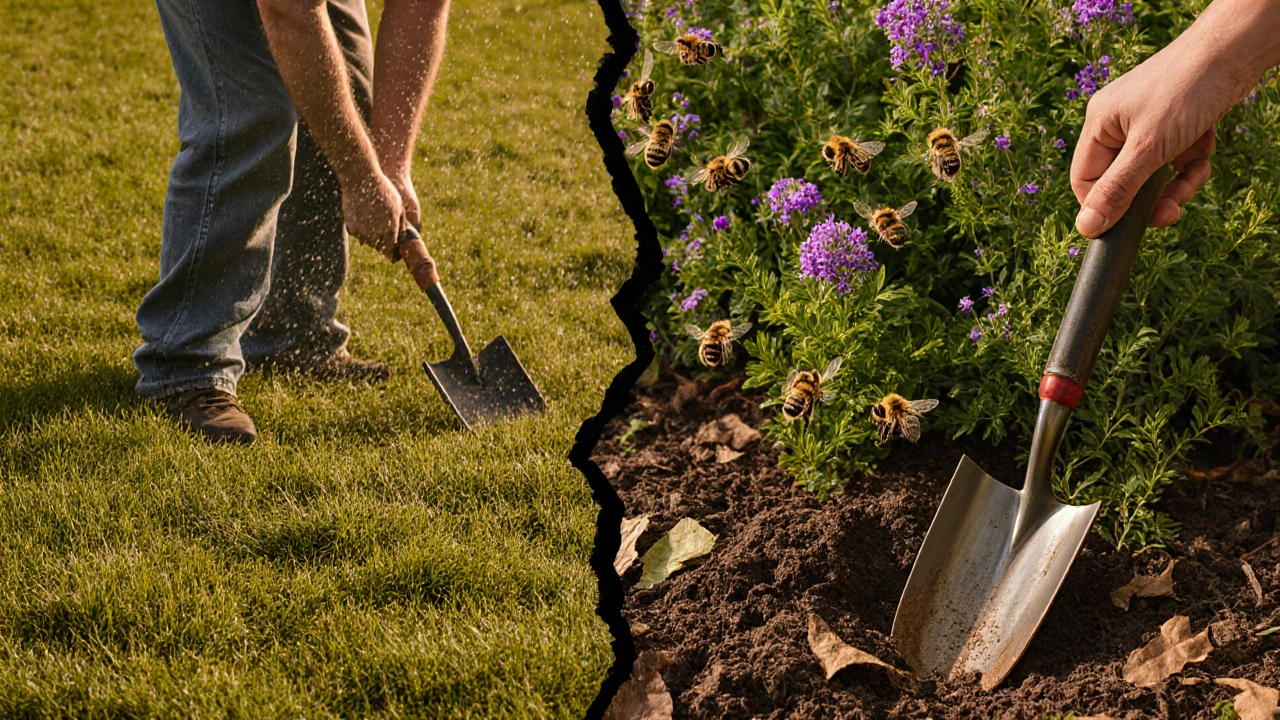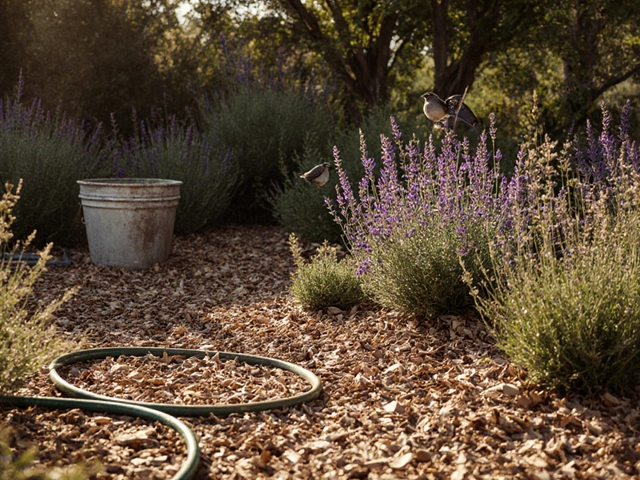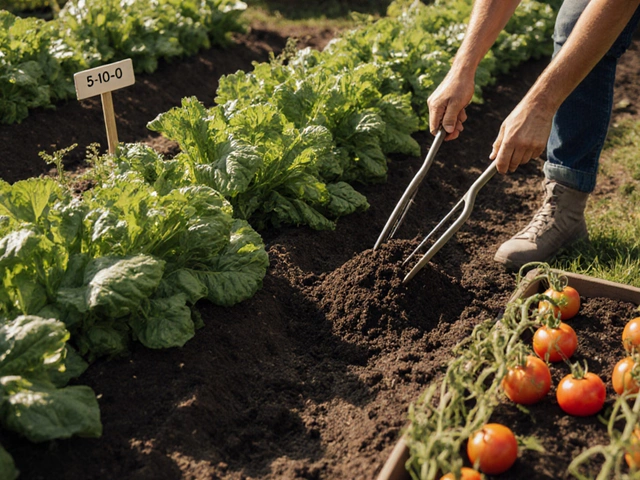Lazy Gardener Plant Selector
Find plants that thrive with minimal effort. Select your location, garden type, and sunlight conditions to get personalized recommendations.
Your Lazy Gardener Plants
Requires: 1 watering every 3 weeks, no pruning
Requires: Watering every 4 weeks, minimal maintenance
Requires: Watering once a month, self-seeds naturally
Requires: Watering once a month, spreads easily
Estimated Time Savings: Only 15 minutes per month of maintenance.
No plants found for your selection. Consider:
- Reducing watering frequency in your area
- Choosing more shade-tolerant plants
- Starting with container gardens for easier management
Ever looked at your neighbor’s garden and thought, How do they keep it looking so good without ever breaking a sweat? That’s not magic. That’s being a lazy gardener.
Being a lazy gardener doesn’t mean you give up on plants. It means you work smarter. You stop fighting nature. You stop pulling weeds every weekend. You stop buying expensive tools you’ll use once. You stop feeling guilty because your garden isn’t a magazine cover. Real lazy gardeners get results-without the burnout.
Lazy gardening isn’t laziness. It’s efficiency.
Most people think gardening means hours of digging, watering, pruning, and mulching. But that’s the old way. The lazy gardener’s way? Let plants do the work for you. Pick the right ones. Put them in the right spots. Then step back.
Take lavender. It thrives in poor soil, needs almost no water after the first year, and repels pests. Plant it once, and it comes back bigger every spring. No fertilizer. No pruning. Just sunlight and silence. That’s lazy gardening in action.
Same with native grasses like Carex or Phormium in New Zealand. They don’t need regular watering. They don’t get overrun by weeds. They survive wind, rain, and even frost. And they look stunning all year. You don’t have to be a plant expert to make them work. You just have to choose them.
Stop watering everything. Start mulching everything.
Watering is the #1 time-suck in traditional gardening. Most people water because they think plants are thirsty. But plants aren’t thirsty-they’re stressed. And stress often comes from exposed soil, not lack of water.
Lazy gardeners cover the ground. Thickly. With mulch. Wood chips, straw, leaf litter, even cardboard. A 5-10 cm layer stops weeds before they sprout. It holds moisture like a sponge. It cools roots in summer. It feeds the soil as it breaks down.
One lazy gardener in Nelson told me she hasn’t watered her front yard in three years. Not because she’s forgetful. Because she covered it with recycled wood chips. Rain gets trapped. Weeds can’t push through. The soil stays alive. She checks it once a season. That’s it.
Choose plants that don’t ask for much.
Not all plants are created equal. Some beg for attention. Others just show up and thrive. Lazy gardeners pick the second kind.
- Native plants like Kowhai, Flax, and Hebe are built for local weather. They don’t need extra fertilizer or protection.
- Perennials like Hostas, Daylilies, and Salvia come back every year. No replanting. No buying new pots.
- Ground covers like Creeping Thyme or Ice Plant spread on their own. They choke out weeds. They bloom. They need nothing.
- Self-seeding plants like Borage, Nasturtiums, and Calendula drop seeds. They pop up where they want. You don’t have to plant them again.
One woman in Wellington replaced her entire lawn with a mix of these. She spent one Saturday planting. Then she walked away. Two years later, her garden looks wild and beautiful. And she’s never touched a hose.

Let nature do the weeding.
Weeds aren’t the enemy. Bad gardening is the enemy.
Traditional advice says: pull every weed. But that’s a never-ending task. Lazy gardeners know: if you cover the soil, weeds can’t grow. If you pick the right plants, they crowd out the invaders.
When weeds do appear? Don’t panic. Don’t grab the hoe. Just cut them down with scissors. Leave the roots. They decompose and feed the soil. Or let a few grow-some, like dandelions, attract pollinators. Others, like clover, fix nitrogen.
One lazy gardener I know lets clover take over patches of her lawn. It’s green. It blooms. It doesn’t need mowing. Bees love it. And she hasn’t bought weedkiller in five years.
Use what you already have.
Lazy gardeners don’t buy new tools. They reuse what’s lying around.
- Old buckets? Turn them into planters. Poke holes in the bottom. Fill with soil. Done.
- Cardboard boxes? Lay them down before mulch. They block weeds for months.
- Broken pots? Crush them. Use the shards as drainage at the bottom of new planters.
- Grass clippings? Leave them on the lawn. They’re fertilizer.
There’s no need to spend $200 on a fancy compost bin. Just pile leaves and kitchen scraps in a corner. Turn it once a year. That’s all. Your soil will thank you.

Forget perfection. Embrace mess.
The biggest myth about gardening? It has to look tidy.
Lazy gardeners don’t trim everything into neat balls. They let plants grow naturally. They leave seed heads for birds. They let fallen leaves stay. They don’t rake every single one.
That’s not messy. That’s healthy. Dead leaves protect roots. Seed heads feed birds. Untidy corners are wildlife havens.
Look at a forest. No one prunes the trees. No one waters the ferns. Yet it thrives. Your garden doesn’t need to be a museum. It just needs to be alive.
What lazy gardeners do differently
Here’s the real list of lazy gardener habits:
- They plant once and forget.
- They mulch before they water.
- They pick plants that grow where they are, not where they wish they were.
- They let nature take over-on purpose.
- They stop apologizing for not having a perfect lawn.
They don’t have more time. They just waste less of it.
Start small. Think long-term.
You don’t need to overhaul your whole yard. Start with one corner. One pot. One patch of soil.
Put down cardboard. Cover it with mulch. Plant one native shrub. Water it once. Then leave it.
Next spring, check on it. You’ll see it’s stronger than you expected. You’ll realize you didn’t have to do anything.
That’s the moment lazy gardening clicks. You’re not lazy. You’re finally listening to the plants.
Is lazy gardening really better for the environment?
Yes. Lazy gardening cuts down on water use, chemical fertilizers, gas-powered tools, and plastic pots. It supports pollinators, builds healthy soil, and reduces landfill waste by reusing materials. A 2023 study from Lincoln University found that low-maintenance gardens in New Zealand used 70% less water and produced 90% less greenhouse gas emissions than traditional lawns.
Can I still have flowers if I’m a lazy gardener?
Absolutely. Many flowers are low-maintenance by nature. Nasturtiums, marigolds, echinacea, and lavender all bloom for months with little care. Choose perennials or self-seeders. Plant them in groups. Don’t deadhead them. Let them drop seeds. You’ll get more flowers next year-without lifting a finger.
What if I live in an apartment with a tiny balcony?
Lazy gardening works anywhere. Use pots with good drainage. Fill them with quality potting mix. Add a layer of mulch on top. Pick plants that like your light conditions-succulents for sun, ferns for shade. Water once a week. That’s it. You don’t need a yard to be a lazy gardener.
Won’t my garden look wild and unkempt?
Wild doesn’t mean ugly. Many lazy gardens look lush, natural, and full of life. Think of a meadow, not a junkyard. Native plants, mulch, and thoughtful spacing create beauty without control. People often ask lazy gardeners how they got their garden to look so intentional-when the truth is, they just stopped trying to control it.
How do I start if I’ve always done things the hard way?
Stop buying new plants. Stop weeding. Stop watering every day. Instead, cover your soil with cardboard and mulch. Pick one plant that grows easily in your area-like a native hebe or a lavender. Plant it. Water it once. Walk away. Come back in spring. You’ll be surprised how much it’s grown. That’s your new rule: less effort, more results.






